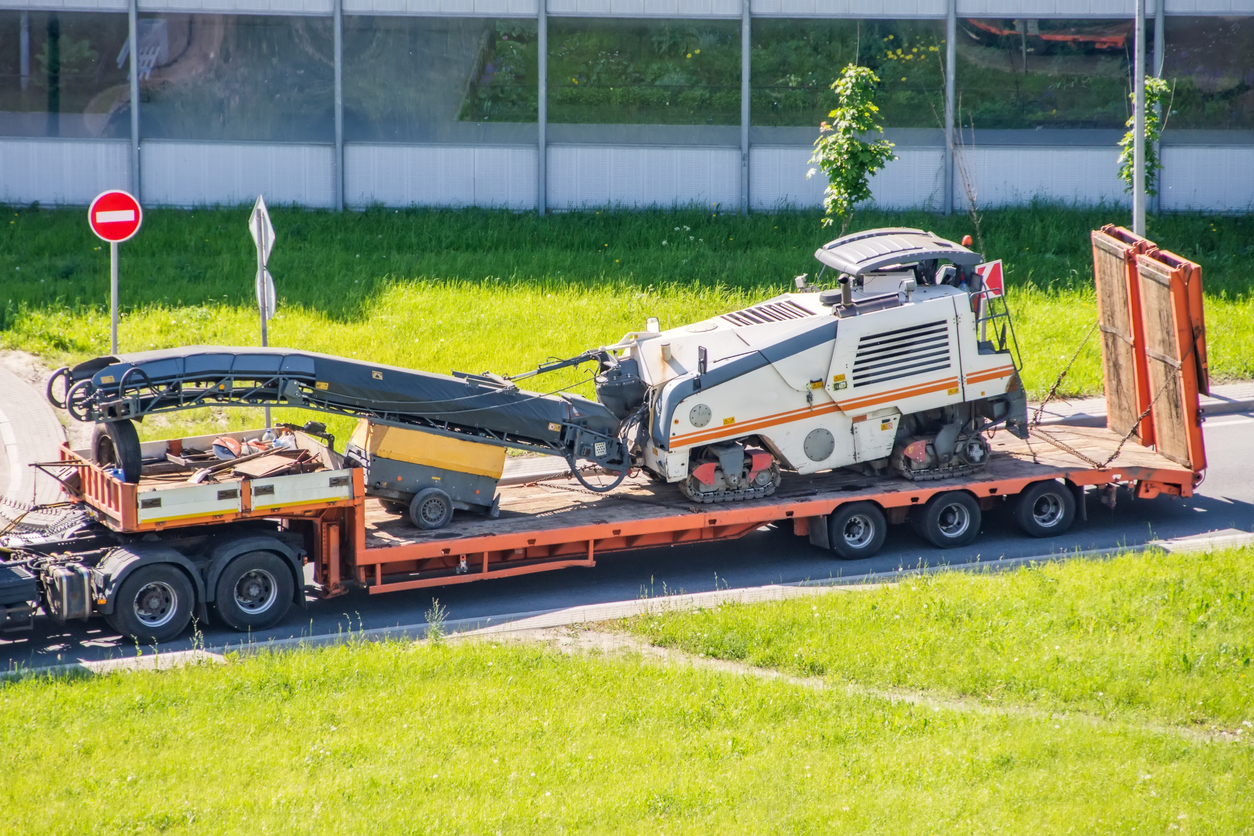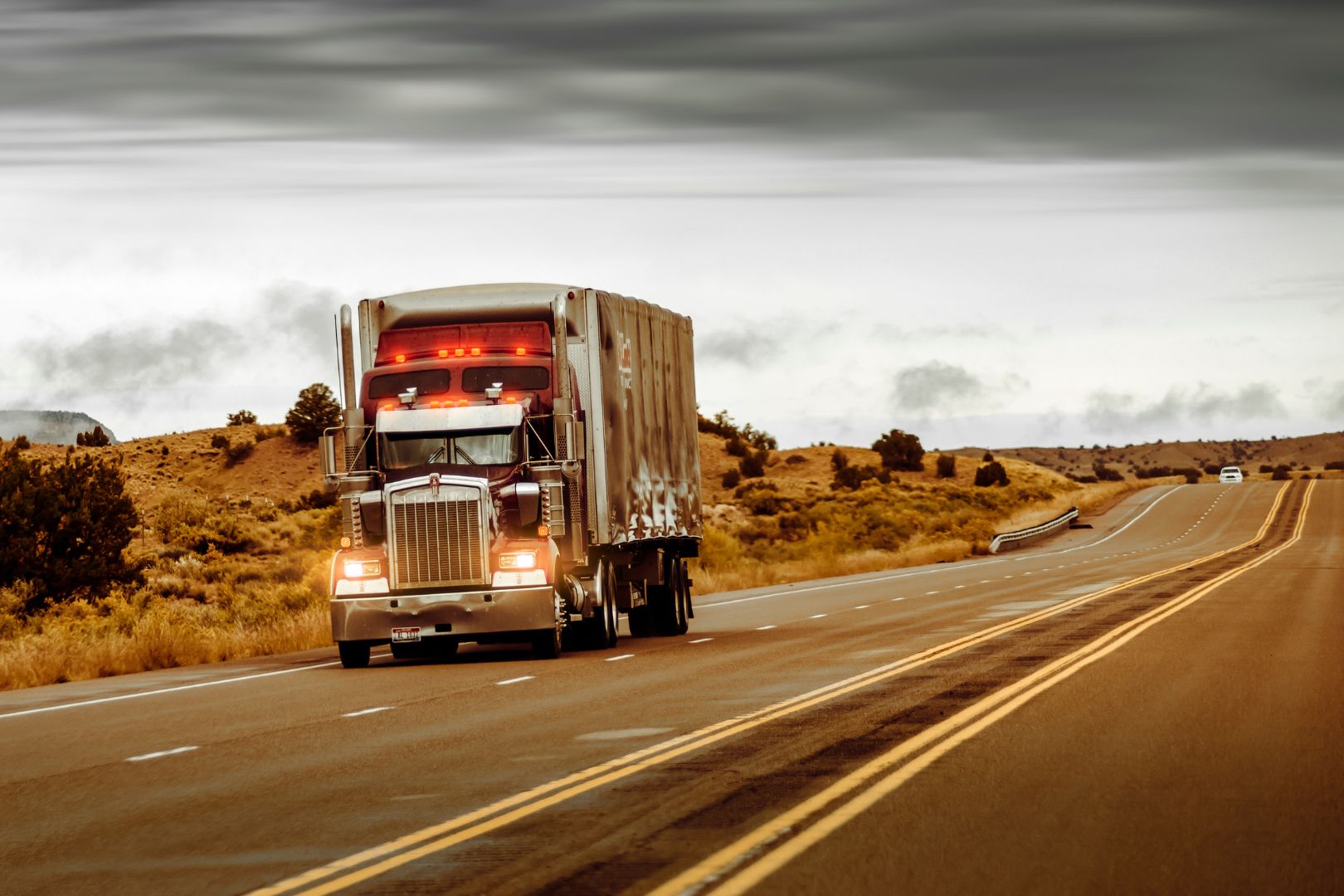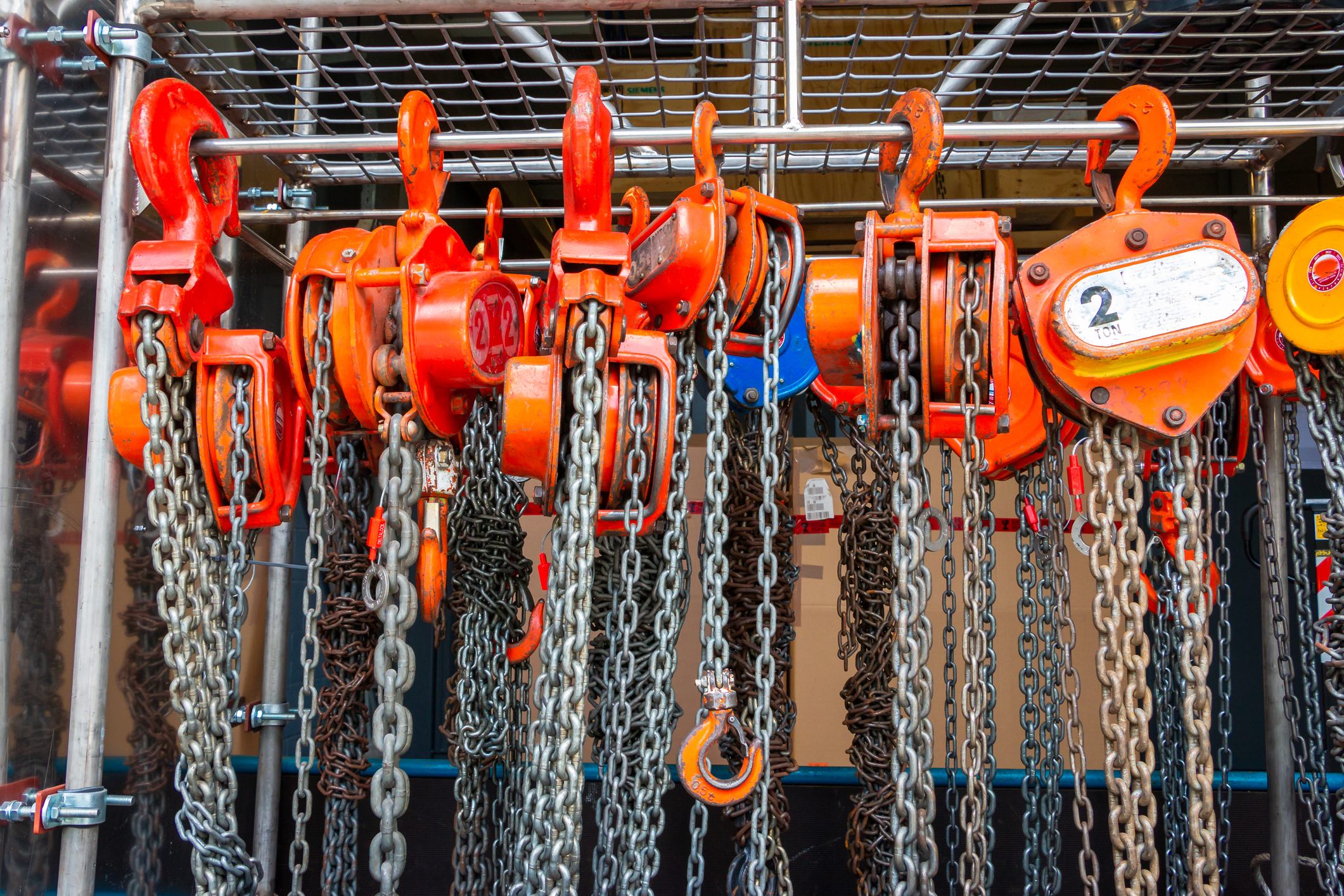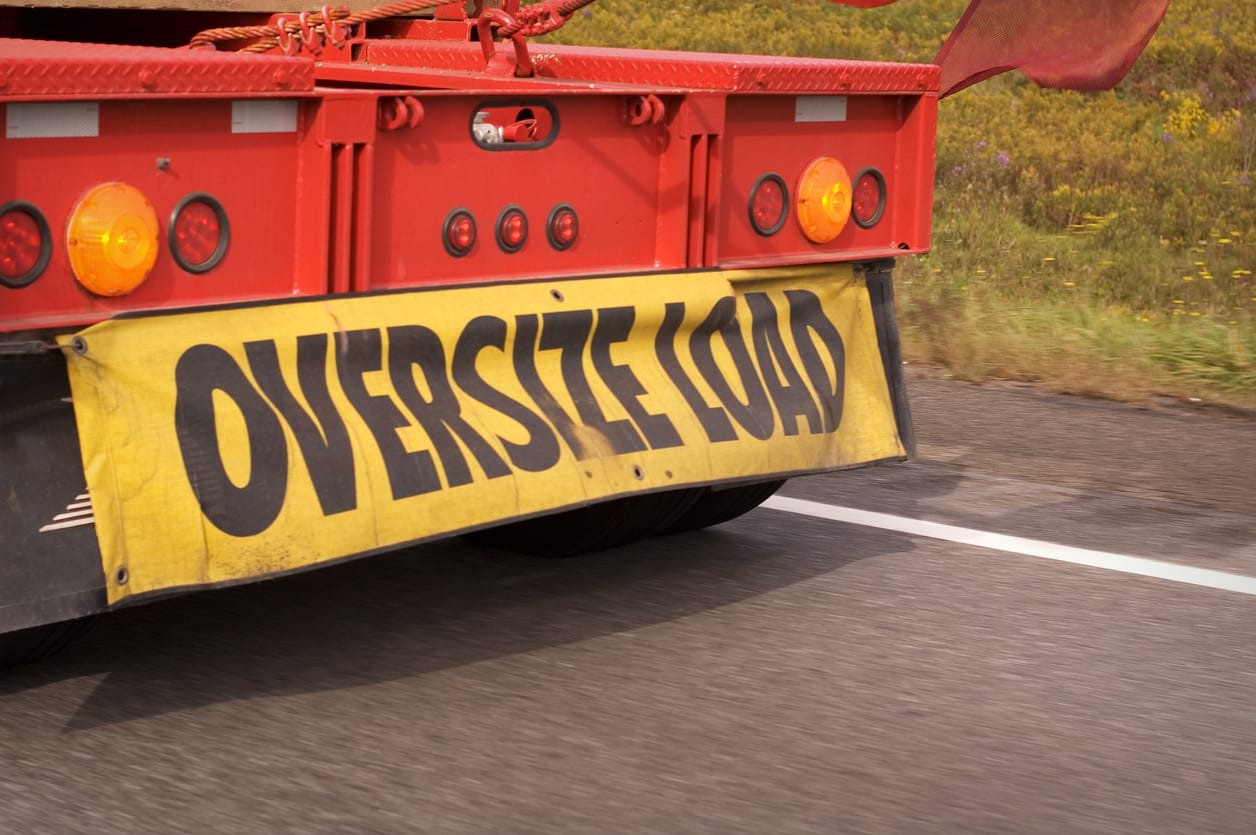As the engines roar and the ground trembles beneath colossal wheels, the task of transporting heavy equipment becomes a testament to precision and planning. When it comes to transporting heavy equipment, the stakes are high.
The right trailer can provide the necessary stability, load capacity, and safety features to ensure a smooth journey, as the choice of the right trailer holds paramount importance. It can mean the difference between seamless transportation and a logistical nightmare.
The wrong trailer can lead to damage to the equipment, safety hazards, and legal issues. Therefore, it is essential to choose the right trailer for your heavy equipment transport needs. We will explore the weight and dimensions of the equipment, the critical nuances of load distribution, and even special considerations such as fragile components and hazardous materials. Road regulations and permits will be demystified, enlightening you on weight restrictions, legal limits, and the intricacies of route planning.
At Ship A Car, Inc. (aks Ship A Car or more simply SAC), we understand the significance of choosing the right trailer for heavy equipment transport. Our dedicated shipping agents, backed by the largest network of carriers, are committed to delivering superior service and ensuring that your valuable vehicles are handled with the utmost care.
Contact us today to discuss your specific requirements, and let us provide you with the peace of mind and exceptional service you deserve.
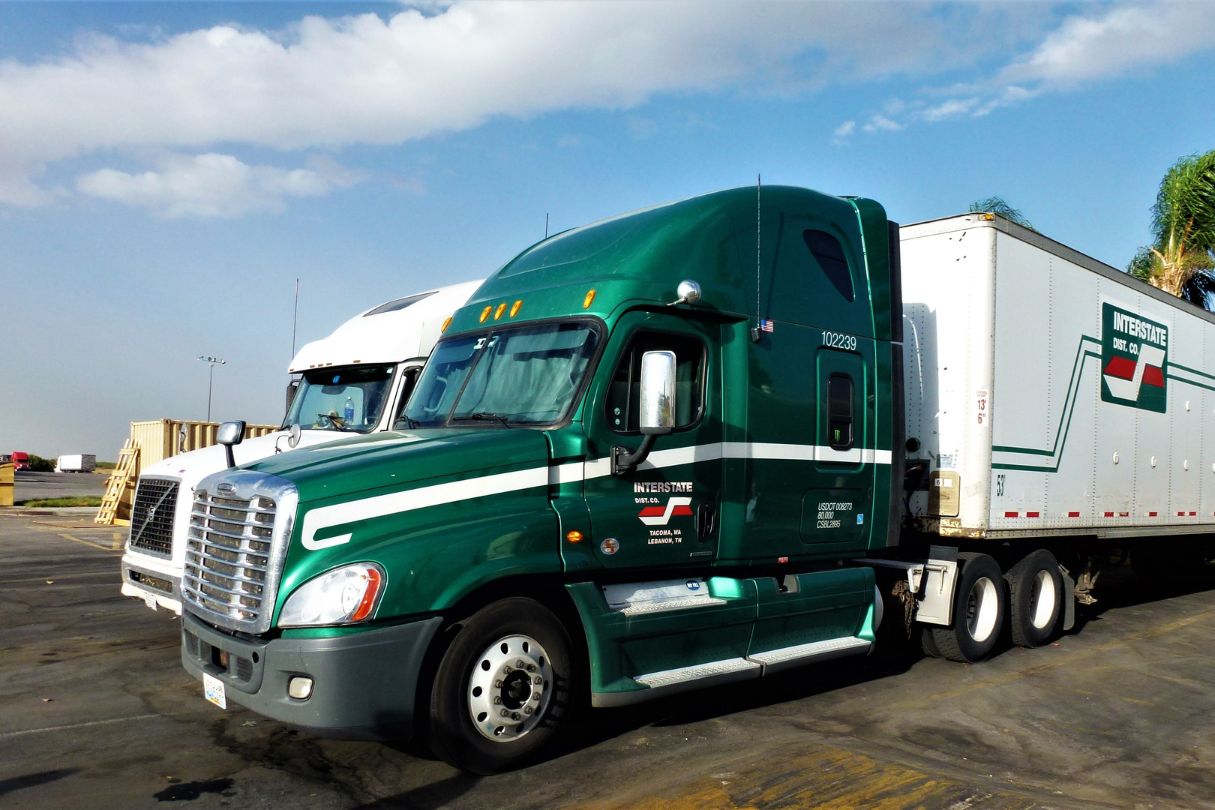
When it comes to heavy equipment transport, one of the first crucial steps is assessing the equipment itself. By thoroughly understanding the characteristics and specifications of the machinery or equipment being transported, you can make informed decisions regarding the choice of trailer and ensure a safe and successful transport operation.
1. Weight and Dimensions of the Equipment:
Determining the weight and dimensions of the equipment is vital in selecting an appropriate trailer. Understanding the equipment’s weight will help you determine the load capacity requirements of the trailer. Additionally, considering the dimensions of the equipment, including height, width, and length, is essential for choosing a trailer that can accommodate the size of the machinery without any constraints or clearance issues.
2. Load Distribution and Centre of Gravity:
Proper load distribution is critical for maintaining stability during transport. It is essential to distribute the weight of the equipment evenly across the trailer to prevent imbalances that could lead to accidents or damage. Understanding the centre of gravity of the equipment helps determine the optimal placement on the trailer and ensures a balanced load for safe transportation.
3. Special Considerations:
Certain types of equipment may require special considerations due to their unique characteristics. For example, equipment with fragile components may require additional measures for protection during transport, such as secure padding or specialized handling techniques. Similarly, if you are transporting hazardous materials, you must comply with specific regulations and ensure the trailer is suitable for transporting such materials safely.
Navigating the intricacies of road regulations and permits is an integral part of heavy equipment transport. It is essential to understand the legal limits, restrictions, and requirements to ensure compliance and avoid unnecessary delays or penalties during transportation.
1. Weight Restrictions and Legal Limits:
Different jurisdictions have specific weight restrictions and legal limits for heavy equipment transport. These restrictions aim to protect infrastructure, ensure road safety, and prevent excessive wear and tear on roads and bridges. Familiarize yourself with the weight limits imposed by local authorities and ensure your chosen trailer can accommodate the equipment while complying with these regulations.
2. Oversize and Overweight Permits:
Transporting oversized or overweight equipment often requires obtaining special permits. These permits authorize the movement of equipment that exceeds standard legal limits. Understanding the process of obtaining oversize and overweight permits is crucial to ensure legal compliance and a smooth transport operation. Be prepared to provide detailed information about the equipment’s dimensions, weight, and planned route when applying for such permits.
3. Route Planning Considerations:
Planning the route for heavy equipment transport involves considering various factors, including road conditions, bridges, tunnels, and potential obstacles. It is important to choose a route that can accommodate the size and weight of the equipment, avoiding low clearances, weight-restricted roads, or other obstacles that could impede the transport process. Additionally, being aware of any construction zones or temporary restrictions along the planned route can help you anticipate potential delays and plan alternative paths if necessary.
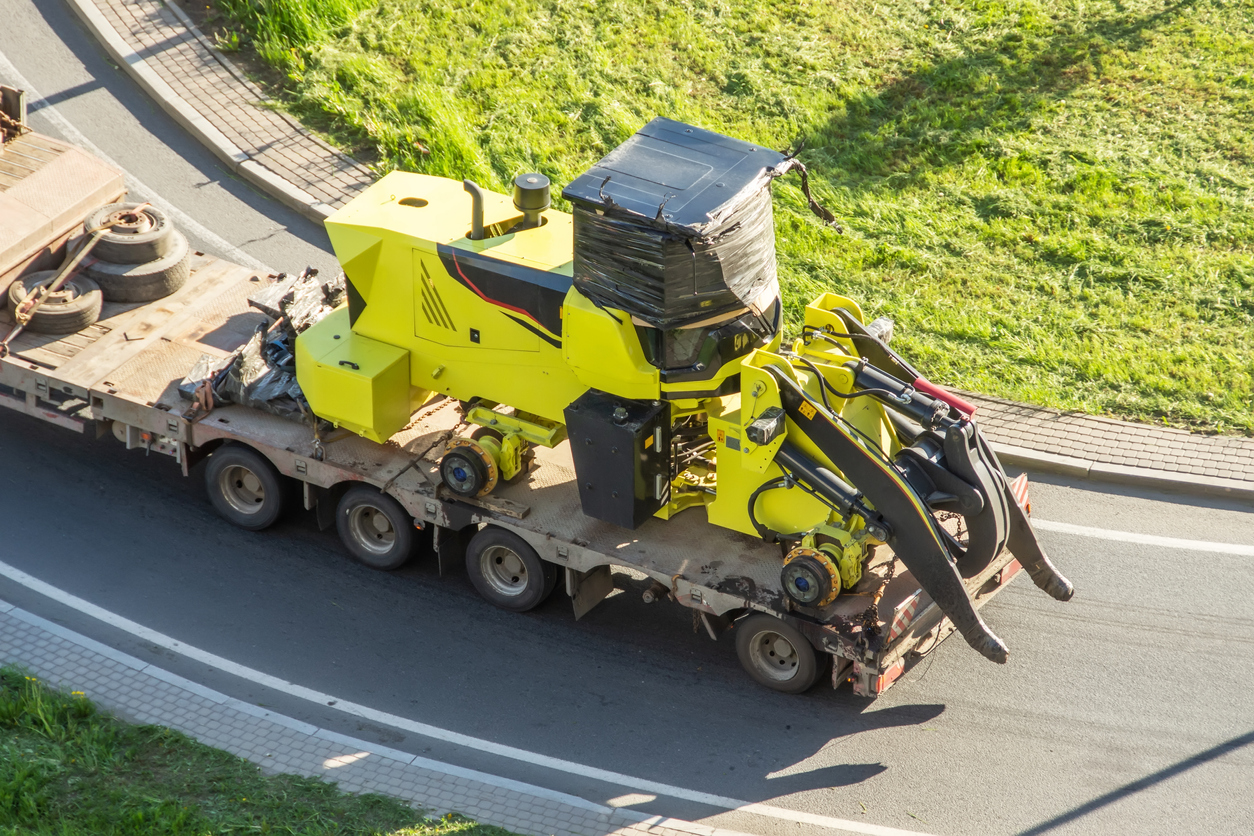
Flatbed trailers are a popular choice for transporting heavy equipment due to their versatility and ease of use. These trailers feature a flat, open platform without any sides or roofs, allowing for easy loading and unloading from all sides.
Here are some key points to consider when utilizing flatbed trailers:
Advantages
- Versatility: Flatbed trailers can accommodate a wide range of equipment sizes and shapes, making them suitable for transporting various types of heavy machinery.
- Accessibility: With no sides or roof, loading and unloading equipment onto a flatbed trailer is relatively straightforward, providing greater flexibility in the transportation process.
Disadvantages
- Exposure to Elements: Since the equipment is exposed to the elements, there is a higher risk of damage from weather conditions, such as rain, snow, or wind.
- Limited Security: Flatbed trailers may be more susceptible to theft or unauthorized access due to the lack of enclosed sides.
Flatbed trailers are well-suited for transporting equipment such as construction machinery, large containers, and oversized loads that can be securely tied down or fastened to the trailer’s flat surface.
To ensure the equipment remains stable and secure during transport, various methods can be used to secure the load on a flatbed trailer. This includes using straps, chains, binders, and other tie-down devices to prevent shifting or movement of the cargo. Proper load securement practices are essential to maintain safety and prevent damage to the equipment or other vehicles on the road.
Lowboy trailers, also known as low bed trailers, are specifically designed to transport oversized and heavy equipment with excessive height or weight. These trailers have a low deck height, allowing for easy loading and accommodating taller equipment. Consider the following aspects when utilizing lowboy trailers:
Advantages and Disadvantages:
Advantages
Height Clearance: The low deck height of lowboy trailers provides ample clearance for taller equipment, such as cranes, bulldozers, or excavators.
ii- Stability: The low centre of gravity provided by the design of lowboy trailers ensures enhanced stability during transport.
Disadvantages
Limited Accessibility: Due to the lower deck height, loading and unloading taller equipment may require additional equipment, such as cranes or forklifts.
Higher Cost: Lowboy trailers are generally more expensive than other trailer types due to their specialized design and capabilities.
Lowboy trailers are ideal for transporting heavy equipment with excessive height, such as large construction machinery, industrial equipment, or oversized vehicles.
When using lowboy trailers, it is crucial to consider the height of the load and ensure it meets height restrictions for bridges, tunnels, power lines, or other potential obstacles along the planned route. Ground clearance should also be taken into account to avoid any bottoming out or damage to the equipment during transport.
Step deck trailers, also known as drop deck trailers, feature a lowered deck in the front and rear sections to accommodate taller equipment. They offer the advantages of both flatbed and lowboy trailers, making them suitable for transporting equipment with varying heights.
Here’s what to know about step deck trailers:
Advantages and Disadvantages
Advantages
Height Clearance: The step deck design allows for increased vertical clearance, enabling the transport of taller equipment while maintaining stability.
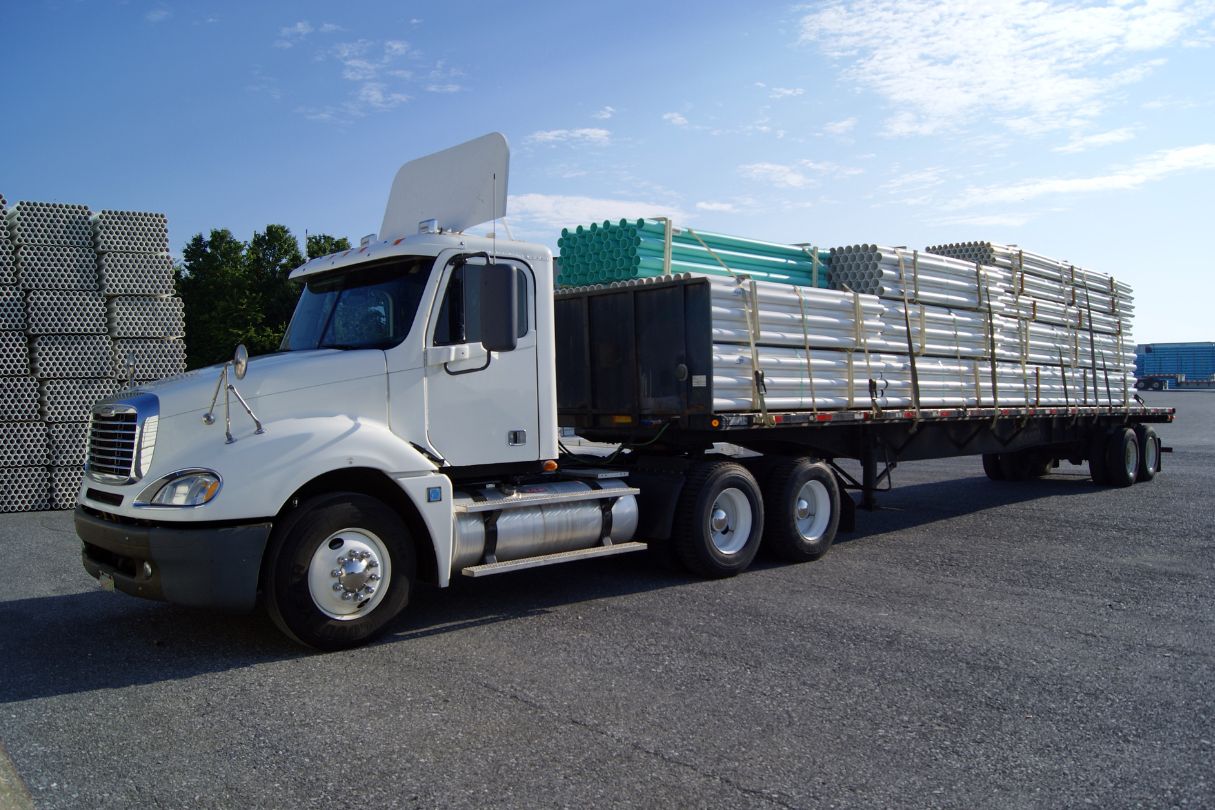
When choosing a trailer for heavy equipment transport, it is crucial to consider the axles and suspension systems. These components play a significant role in ensuring stability, load capacity, and smooth transportation. Let’s explore some key considerations:
1. Single, Tandem, and Tridem Axles:
Trailers can be equipped with different axle configurations, such as single, tandem, or tridem axles. Single axle trailers are suitable for lighter loads, while tandem and tridem axles provide greater load-bearing capacity and improved weight distribution.
Choosing the right axle configuration depends on the weight and size of the equipment you intend to transport.
2. Air Ride Suspension vs. Mechanical Suspension:
Suspension systems play a crucial role in mitigating the impact of road vibrations and shocks during transportation. Air ride suspension systems utilize airbags, providing a smoother ride and better load protection.
Mechanical suspension systems, on the other hand, utilize springs and dampeners and are generally more cost-effective. Consider the nature of the equipment being transported and the desired level of shock absorption when selecting the suspension system.
3. Load Capacity and Weight Distribution:
Understanding the load capacity and weight distribution capabilities of the trailer is essential for safe and efficient transport. Ensure that the trailer is designed to handle the weight of your equipment and distribute the load evenly across the axles to comply with legal requirements and maintain stability on the road.
The choice of decking materials for the trailer impacts both durability and safety. Consider the following factors when evaluating different options:
1. Steel vs. Aluminum Decks:
Steel decks offer exceptional strength and durability, making them suitable for heavy equipment transport. They can withstand heavy loads, harsh weather conditions, and provide resistance against impacts.
Aluminum decks, on the other hand, are lighter, corrosion-resistant, and offer improved fuel efficiency. Consider the weight of your equipment, environmental factors, and specific requirements to determine the most suitable decking material.
2. Non-Slip Surfaces and Coatings:
To ensure safe loading and unloading procedures, trailers should feature non-slip surfaces or coatings on the decks. These help prevent equipment from shifting during transport and provide secure footing for operators. Non-slip surfaces reduce the risk of accidents and protect valuable equipment.
Ramps and hydraulic lift systems are essential features that facilitate the efficient and safe loading and unloading of heavy equipment. Consider the following aspects:
1. Types of Ramps and Their Usability:
Trailers can be equipped with various types of ramps, such as foldable, telescopic, or detachable ramps. These ramps provide accessibility for different types of equipment, allowing for smooth and efficient loading and unloading. Choose ramps that are compatible with the equipment you transport to ensure ease of use and minimize the risk of damage during the process.
2. Hydraulic Lift Systems and Their Benefits:
Hydraulic lift systems offer convenient and controlled lifting and lowering of the trailer bed. These systems provide adjustable deck heights, allowing for seamless alignment with loading docks or equipment. Hydraulic lifts simplify the loading and unloading process, enhance operator safety, and minimize the risk of equipment damage.
Safety and security should be top priorities when selecting a trailer for heavy equipment transport. Consider the following features to ensure the protection of both the equipment and the trailer:
1. Lighting and Reflective Markings:
Adequate lighting, including taillights, brake lights, and reflective markings, is crucial for visibility and compliance with road safety regulations. Well-placed lighting ensures other drivers can see the trailer, especially during night time or low-visibility conditions.
2. Tie-Down Points and D-Rings:
Trailers should be equipped with sufficient tie-down points and D-rings strategically placed on the deck. These secure attachment points allow for proper fastening and securing of the equipment during transportation. It is essential to have multiple tie-down options to ensure that the load remains stable and in place throughout the journey.
3. Locking Mechanisms and Anti-Theft Measures:
Protecting valuable equipment from theft is crucial. Trailers should feature robust locking mechanisms, such as sturdy couplers and reliable hitch locks, to prevent unauthorized access or detachment of the trailer from the towing vehicle.
Additionally, consider trailers equipped with anti-theft measures, such as GPS tracking systems or wheel locks, to enhance security and aid in recovery efforts if necessary.
Investing in trailers with comprehensive safety and security features not only safeguards your equipment but also provides peace of mind throughout the transportation process.
Carefully considering the axles and suspension systems, decking materials, ramps and hydraulic systems, as well as safety and security features, you can make an informed decision when selecting a trailer for heavy equipment transport.
Remember, the right trailer should not only meet your equipment’s specific requirements but also prioritize safety, durability, and efficiency.
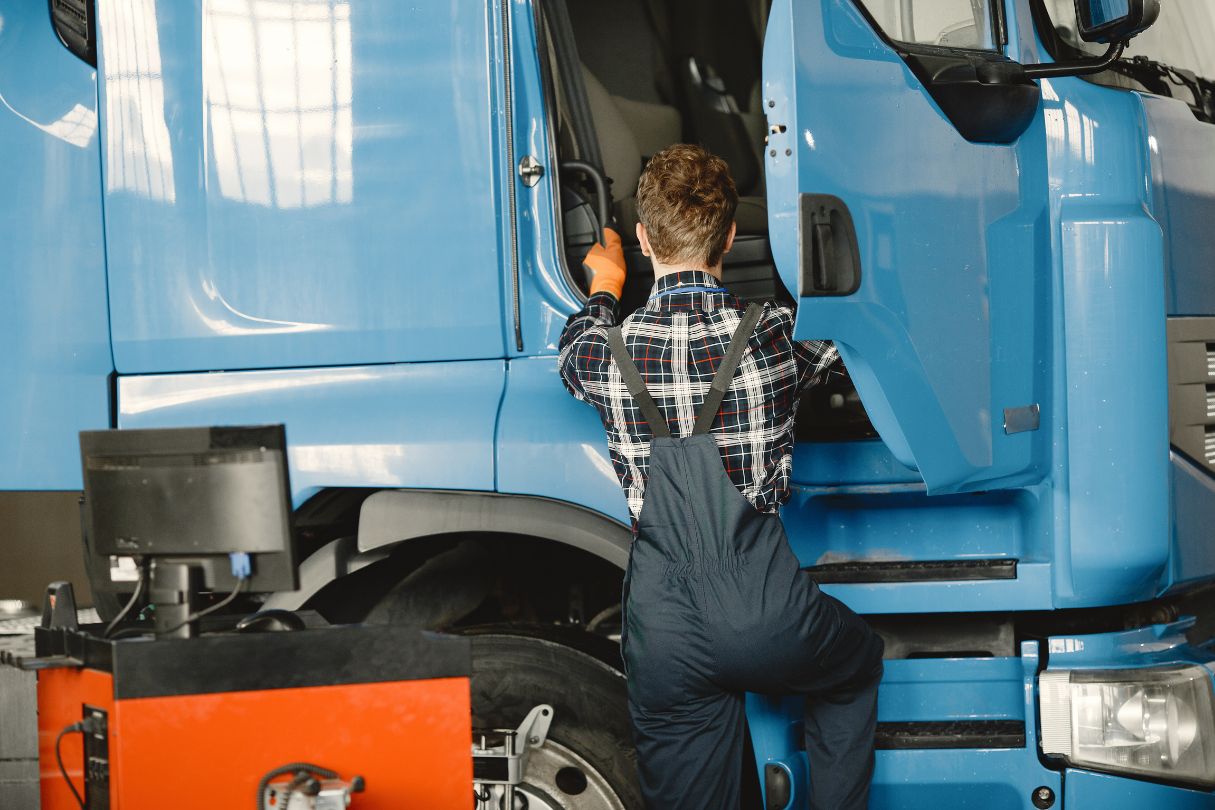
When it comes to choosing the right trailer supplier for your heavy equipment transport needs, thorough research is key.
Here are some factors to consider:
1. Reputation and Customer Reviews:
It’s important to assess the reputation of trailer manufacturers and dealers in the industry. Look for companies that have a solid track record of providing high-quality trailers and excellent customer service.
Reading customer reviews and testimonials can give you valuable insights into their reliability, professionalism, and overall customer satisfaction.
2. Quality of Construction and Materials:
The quality of construction and materials used in trailer manufacturing plays a significant role in the durability and longevity of the equipment. Ensure that the trailers are built to withstand heavy loads and demanding transportation conditions.
Look for manufacturers that utilize sturdy materials and employ robust construction techniques to ensure the trailers can withstand the rigours of heavy equipment transport.
3. Warranty and After-Sales Service:
A reputable trailer supplier will stand behind their products with comprehensive warranty coverage. A solid warranty demonstrates the manufacturer’s confidence in the quality and reliability of their trailers. Additionally, inquire about their after-sales service and support. It’s beneficial to work with a supplier that offers responsive customer service, readily available spare parts, and assistance with any maintenance or repair needs that may arise.
Every heavy equipment transportation project is unique, and sometimes standard trailers may not fully meet your specific requirements. Consider the following customization options and special requirements when choosing a trailer supplier:
1. Custom-Built Trailers:
Some trailer manufacturers offer custom-built trailers tailored to your specific needs. This option allows you to collaborate with the supplier to design a trailer that accommodates the size, weight, and dimensions of your equipment. Custom-built trailers ensure a perfect fit and can incorporate additional features or modifications to enhance functionality and efficiency.
2. Additional Features and Accessories:
Look for trailer suppliers who offer a range of additional features and accessories to enhance the performance and usability of your trailers.
This may include items such as toolboxes, winches, spare tire mounts, or specialized tie-down systems. Having the ability to customize your trailers with these extras can greatly improve your operational efficiency and convenience.
3. Maintenance and Repair Services:
It’s essential to consider the availability of maintenance and repair services when choosing a trailer supplier. Find out if they provide regular maintenance schedules, inspections, and servicing options to keep your trailers in optimal condition.
Additionally, inquire about their repair services, including the availability of technicians and spare parts. A supplier that offers comprehensive maintenance and repair support can help minimize downtime and ensure that your trailers remain in top working condition.
Exploring customization options, additional features, and maintenance and repair services will enable you to select a supplier that can meet your specific needs and provide excellent support throughout your heavy equipment transport endeavours.
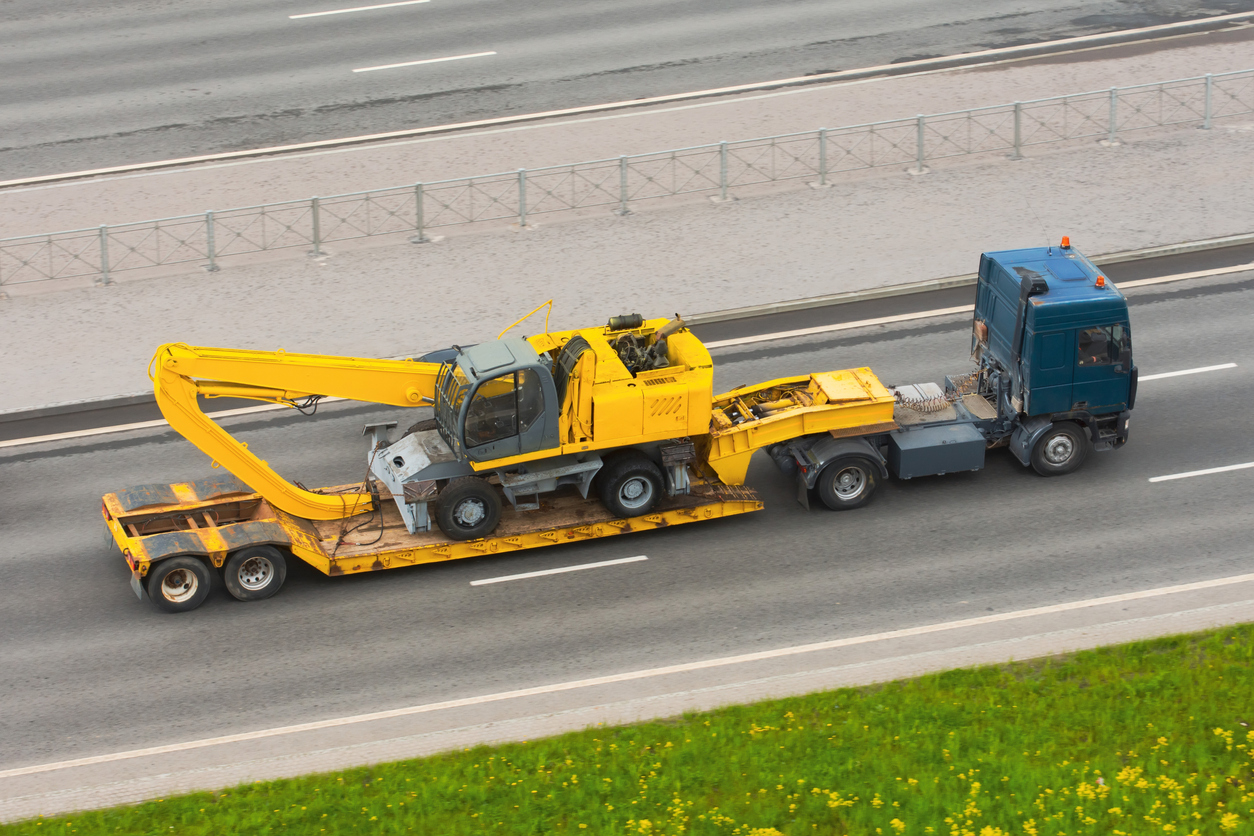
When considering heavy equipment transport, one of the key cost considerations is whether to purchase a trailer or opt for renting one. Let’s explore the pros and cons of each option:
1. Pros and Cons of Purchasing a Trailer:
Pros
i- Ownership: Purchasing a trailer provides you with complete ownership and control over the equipment.
ii- Long-term cost savings: If you frequently require heavy equipment transport, purchasing a trailer can be more cost-effective in the long run compared to renting.
iii – Customization: When you own a trailer, you have the freedom to customize it according to your specific needs, ensuring it is tailored to your equipment and transport requirements.
iv- Convenience: Having a trailer readily available on-site can provide you with greater flexibility and convenience in managing your transportation needs.
Cons
i- Initial investment: Purchasing a trailer requires a significant upfront investment, which may pose a financial challenge for some businesses or individuals.
ii- Maintenance and storage: As the owner, you are responsible for the maintenance, repairs, and storage of the trailer, which adds to your ongoing expenses and logistical considerations.
iii- Depreciation: Over time, trailers may depreciate, potentially impacting their resale value.
2. Benefits and Drawbacks of Renting a Trailer:
Pros
i- Lower upfront costs: Renting a trailer eliminates the need for a substantial upfront investment, making it a more affordable option for those with budget constraints or sporadic transportation needs.
ii- Flexibility: Renting allows you to choose the appropriate trailer type and size for each specific project, ensuring you have the right equipment for the job at hand.
iii- Maintenance included: Rental agreements often include maintenance and repair services, relieving you of the responsibility for upkeep and associated costs.
Cons
i- Higher long-term costs: While renting may be more cost-effective for short-term or infrequent transportation needs, the cumulative rental fees can surpass the cost of purchasing a trailer over an extended period.
ii- Limited customization: Renting a trailer may limit your ability to customize it to fit your specific requirements.
iii- Availability and schedule: Depending on demand, there may be limitations on the availability of rental trailers, potentially impacting your project timelines.
When evaluating the cost considerations of heavy equipment transport, it is crucial to assess the total cost of ownership, which encompasses various factors:
1. Initial Investment and Financing Options:
Consider the upfront cost of purchasing a trailer and explore financing options, such as loans or leasing agreements, to alleviate the immediate financial burden. Compare different financing terms and interest rates to choose the most favourable option for your circumstances.
2. Maintenance and Operating Expenses:
Owning a trailer entails ongoing expenses for maintenance, repairs, insurance, licensing, and registration fees. Regular maintenance is essential to ensure the trailer’s reliability and longevity. Factor in these costs when assessing the overall financial implications of purchasing a trailer.
3. Resale Value and Depreciation:
Trailers, like any other equipment, can depreciate in value over time. Research the market and assess the potential resale value of the trailer you intend to purchase.
Consider factors such as the trailer’s condition, age, and demand in the used trailer market. Understanding the depreciation rate can help you gauge the long-term cost implications of ownership.
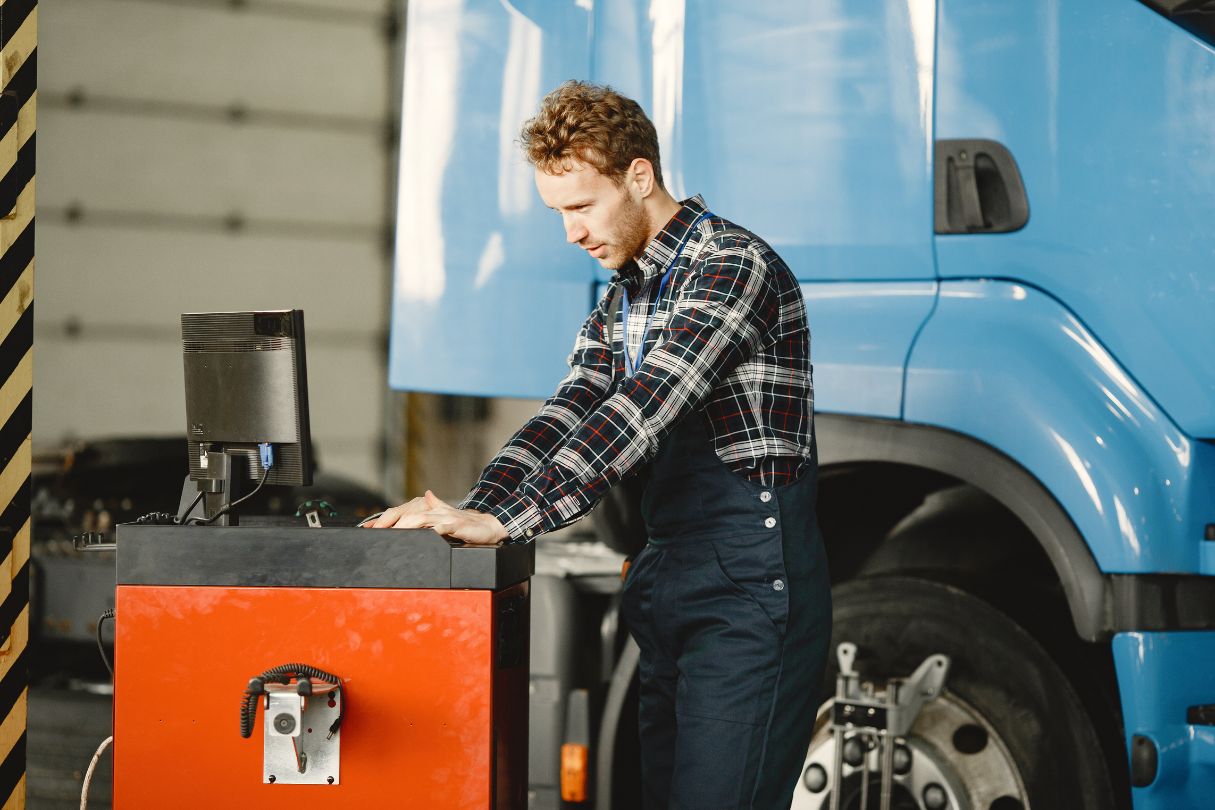
When it comes to heavy equipment transport, safety should always be a top priority. Ensuring proper loading and securement of the equipment is crucial to prevent accidents and protect both the equipment and other road users. Let’s explore some key considerations in this area:
1. Load Distribution and Weight Limits:
Proper load distribution is essential for maintaining stability during transportation. It is important to understand the weight limits and axle weight restrictions imposed by local regulations. Distributing the weight evenly across the trailer and securing the load properly helps maintain balance and prevent excessive strain on the trailer and towing vehicle.
2. Tiedown Methods and Regulations:
Securing the equipment effectively is vital to prevent shifting, tipping, or falling during transport. Different types of equipment may require specific tie-down methods, such as straps, chains, or binders. It is crucial to familiarize yourself with the proper techniques and follow the regulations and guidelines outlined by relevant authorities to ensure the load is adequately secured.
3. Compliance with Cargo Securement Rules:
Compliance with cargo securement rules is a legal requirement to ensure safe transportation. Familiarize yourself with the cargo securement regulations in your jurisdiction, which may include specific rules regarding the number and type of tie-downs required based on the weight and dimensions of the equipment being transported. Adhering to these rules helps protect not only the equipment but also the safety of everyone on the road.
Protecting your assets and mitigating risks is an integral part of heavy equipment transport. Having the appropriate insurance coverage in place provides peace of mind and financial protection in case of accidents or unforeseen events. Consider the following insurance options:
1. Trailer Insurance Options:
Trailer insurance covers damage or loss to the trailer itself. It typically includes protection against collision, theft, fire, and vandalism. Insuring your trailer ensures that you are financially safeguarded in case of any unfortunate incidents that may damage or result in the loss of your trailer.
2. Liability Coverage and Cargo Insurance:
Liability coverage is essential to protect against any damage or injuries caused to others while operating your trailer. This coverage extends to any third-party property damage or bodily injuries resulting from accidents involving your trailer.
Additionally, cargo insurance provides coverage for the equipment being transported, offering financial protection in case of damage or loss during transit.
Operating a trailer for heavy equipment transport often requires specific licenses and certifications to ensure compliance with regulations and safety standards. Consider the following requirements:
1. CDL Requirements for Towing Heavy Equipment:
Towing heavy equipment typically requires a Commercial Driver’s License (CDL) in most jurisdictions. CDL requirements may vary depending on the weight of the trailer and the equipment being transported. Ensure that you meet the necessary CDL criteria, which may involve written tests, driving exams, and medical certifications, to legally operate a trailer for heavy equipment transport.
2. Special Licenses and Endorsements:
In addition to a CDL, specific situations or types of equipment may require special licenses or endorsements. These could include endorsements for hauling hazardous materials or oversized loads. Familiarize yourself with the specific licensing and endorsement requirements in your area to ensure compliance and legal operation.
Emphasizing safety and legal compliance not only protects your assets but also contributes to an optimistic outlook for the industry as a whole.

Finally, Let’s recap the key points covered:
- Understanding the Requirements: Assessing the equipment and road regulations and permits are fundamental steps to determine the specific needs of your heavy equipment transport operation.
- Types of Trailers: We discussed different trailer options such as flatbed trailers, lowboy trailers, step deck trailers, extendable trailers, and specialized trailers. Each type has its advantages, disadvantages, and suitability for specific equipment.
- Trailer Features and Specifications: Axles and suspension systems, decking materials, ramps and hydraulic systems, as well as safety and security features, are crucial considerations when evaluating trailer options.
- Choosing the Right Trailer Supplier: Researching trailer manufacturers and dealers, exploring customization options, and considering additional services like maintenance and repair are important factors in selecting a reliable and reputable trailer supplier.
- Cost Considerations: We compared the pros and cons of purchasing versus renting trailers and discussed the total cost of ownership, including initial investment, maintenance and operating expenses, and resale value.
- Safety and Legal Compliance: Proper loading and securement, insurance coverage, and licensing and certification requirements are essential for ensuring safety, protecting assets, and complying with legal regulations.
Making an informed decision when choosing the right trailer for heavy equipment transport is of utmost importance. By considering all the factors discussed in this article, you can optimize efficiency, minimize risks, and ensure the safe and secure transportation of your valuable equipment.
Remember, investing time and effort in research, seeking expert advice, and considering your specific requirements will pay off in the long run. By selecting the appropriate trailer, you can enhance the efficiency of your operations, minimize downtime, and ultimately contribute to the success of your heavy equipment transport endeavours.
In conclusion, the process of choosing the right trailer for heavy equipment transport may seem complex, but by following the guidelines presented here, you can navigate through the options with confidence and make a decision that aligns with your needs. Whether you’re transporting construction machinery, agricultural equipment, or any other heavy equipment, selecting the right trailer is a crucial step towards achieving a smooth and successful transportation operation.

Q: What factors should I consider when choosing a trailer for heavy equipment transport?
A: When choosing a trailer, consider the weight and dimensions of the equipment, load distribution, road regulations and permits, as well as any special considerations such as fragile components or hazardous materials.
Q: What are the advantages of using a flatbed trailer for heavy equipment transport?
A: Flatbed trailers offer versatility, easy loading and unloading, and ample space for various equipment sizes and shapes. They also allow for securing the load using straps, chains, and binders.
Q: What is the benefit of using a lowboy trailer?
A: Lowboy trailers provide a low deck height, making them suitable for transporting tall and heavy equipment with high load heights. They offer excellent ground clearance and stability.
Q: How do step deck trailers differ from other trailer types?
A: Step deck trailers have a drop in the deck, which allows for increased vertical clearance. This makes them ideal for hauling equipment with higher profiles or equipment that requires loading from the sides.
Q: Are extendable trailers a good option for heavy equipment transport?
A: Yes, extendable trailers provide adjustable length, accommodating different equipment sizes. They offer flexibility and versatility, making them suitable for various heavy equipment transport needs.
Q: What are the advantages of using specialized trailers?
A: Specialized trailers, such as heavy-haul trailers, multi-axle trailers, modular trailers, and transporters, are designed for specific transportation needs. They offer enhanced load capacity, stability, and manoeuvrability for challenging heavy equipment transport projects.
Q: How do I determine the appropriate axle and suspension system for my trailer?
A: The choice of axle and suspension system depends on the weight capacity and load distribution of your equipment. Factors like single, tandem, or tridem axles, as well as air ride suspension versus mechanical suspension, should be considered.
Q: What safety features should I look for in a trailer?
A: Look for trailers with proper lighting and reflective markings, secure tie-down points and D-rings, as well as reliable locking mechanisms and anti-theft measures. These features contribute to the safe and secure transportation of heavy equipment.
Q: Should I consider renting or purchasing a trailer for heavy equipment transport?
A: The decision between renting and purchasing depends on your specific needs and circumstances. Renting offers flexibility and lower upfront costs, while purchasing provides long-term ownership and customization options. Consider factors such as frequency of use, budget, and long-term plans to make the right choice.
